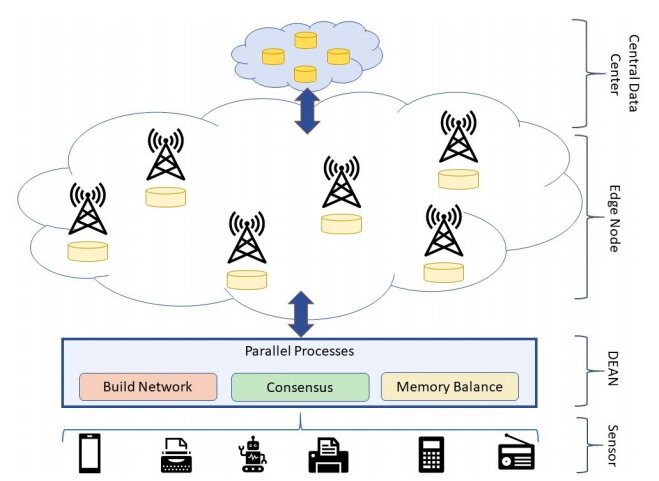TECH

DEAN: A blockchain protocol for more reliable edge computing
Edge computing is an innovative computing method that can enhance the efficiency of machine learning and other computational techniques by running fewer processes in the cloud and distributing the processing load across nearby edge devices (i.e., edge nodes). This type of computing has proved to be highly promising for a number of applications, particularly in aiding businesses to maximize their operational efficiency and overall IT performance.
Despite their advantages, most edge computing techniques developed so far pose a series of security risks, as they do not always ensure the protection of edge nodes and end devices. These security issues have been repeatedly exposed over the past few years, following a growing number of incidents in which attackers hijacked devices within an edge computing infrastructure.
Researchers at University of Nevada have recently carried out a study aimed at identifying possible solutions to overcome security problems associated with edge computing approaches. In their paper, pre-published on arXiv, they introduce a blockchain protocol that could prevent attackers from hijacking edge nodes and accessing or manipulating sensitive information.
"This paper proposes a cooperative protocol, namely DEAN, across edge nodes to prevent data manipulation and to allow fair data sharing with quick recovery under resource constraints of limited storage, computing, and network capacity," the researchers wrote in their paper.
The cooperative protocol introduced by this team of researchers is based on a parallel mechanism equipped with three independent core components, namely nodes, block and transactions. The nodes contained in the system are divided into two categories: edge nodes and sensors.
"The edge nodes disseminate, verify (i.e., mining), and store blocks in the blockchain, while the sensors can only send requests to the edge devices for validation," the researchers wrote. "Each node has private and public keys to authenticate itself. A node has a unique hash id that helps others to identify a node. Other nodes in the network can verify the identity of a node (i.e., hash) by its public key."
In the DEAN protocol, every time a node mines a block it earns an incentive, which is referred to as a 'coin'. Blocks store a number of essential elements and additional components, like in other traditional conventional blockchains. The final core component of DEAN's underlying mechanism are transactions that are uploaded onto the blockchain by sensors.
"Sensors will generate data and upload it as a transaction to the blockchain," the researchers wrote. "The typical example of a transaction is a fund transfer in mobile payment or business data."
So far, the researchers implemented their protocol as a system prototype and verified its effectiveness by comparing it to three popular blockchain approaches, namely Ethereum, Parity and Hyperledger Fabric. In their initial tests, the prototype system performed better than all the systems it was compared to, presenting a high resilience to arbitrary failures.
"Performance-wise, DEAN-based blockchain implementation outperforms the other state-of-the-art blockchain systems with up to 25x higher throughput and 18x lower latency on 1,000 nodes," the researchers wrote.
The new protocol introduced in the recent study can achieve high data fidelity in edge computing, as well remarkable performance. In the future, the prototype devised by the researchers could be developed further and implemented in real world settings, enhancing the reliability and security of edge computing techniques.
by Ingrid Fadelli

No comments:
Post a Comment